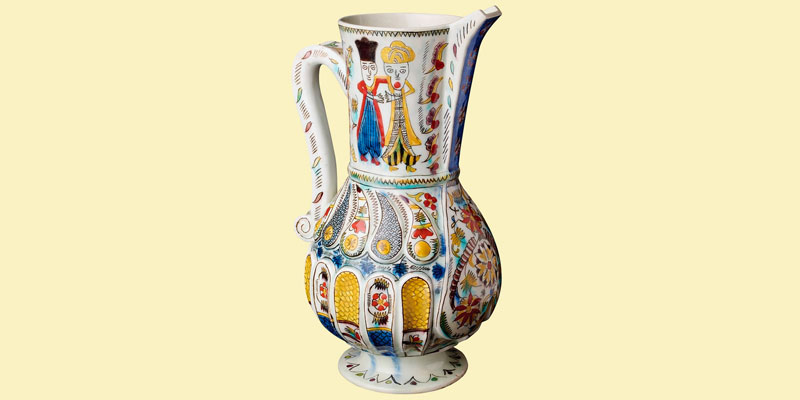The art of Turkish ceramics and tiles developed in Anatolia and reached its highest level of technique and aesthetics during the Seljuk and Ottoman periods. The art of ceramics and tiles has become a cultural treasure as it developed in Anatolia throughout history. Throughout history from the earliest ages, with its patterns of enhancement and its raw material being clay, ceramics and tiles have become a work of art that reflects the sensitivity of societies, the accumulation culture, religious beliefs, relationships and life in society.
Other branches of ceramics cluster in the art of tile making, brick and tile production. Today, Kutahya has become an important center for the manufacturing Turkish ceramics and tiles. In addition, efforts are also being made in private workshops and educational institutions in Iznik, Istanbul and Bursa to perpetuate the art of traditional Turkish ceramics and tiles and to develop it so that it can meet the demands of the modern life.
Turkish Iznik Tiles
In the 17th century, Iznik became an important center of tile production for the Ottoman Empire. The most distinctive feature of 16th century Turkish Iznik ceramics and tiles is its red color and blue-white decoration, with the exception of green, turquoise and black. The slightly puffed coral red under the frit is the most distinctive element of this 16th century style.
Turkish Kutahya Ceramics

Kutahya was the most important ceramic production center in the Ottoman Empire. Thanks to the numerous clay deposits in the region, ceramics were produced there in large quantities during the Phrygian, Hellenistic, Roman and Byzantine periods. The traditional techniques of this art have survived to this day.
Turkish Canakkale Ceramics

From the late 17th century to the first decades of the 20th century, Canakkale was the production area for authentic and picturesque works of art. Purplish brown, orange, yellow, dark blue and white paints were applied under clear glaze. Pitchers, vases, vintages, plates, cups, writing sets, braziers are among the most common ceramic objects as well as pitchers with spout, ring-shaped, surmounted by horses or pitchers with spouts.

